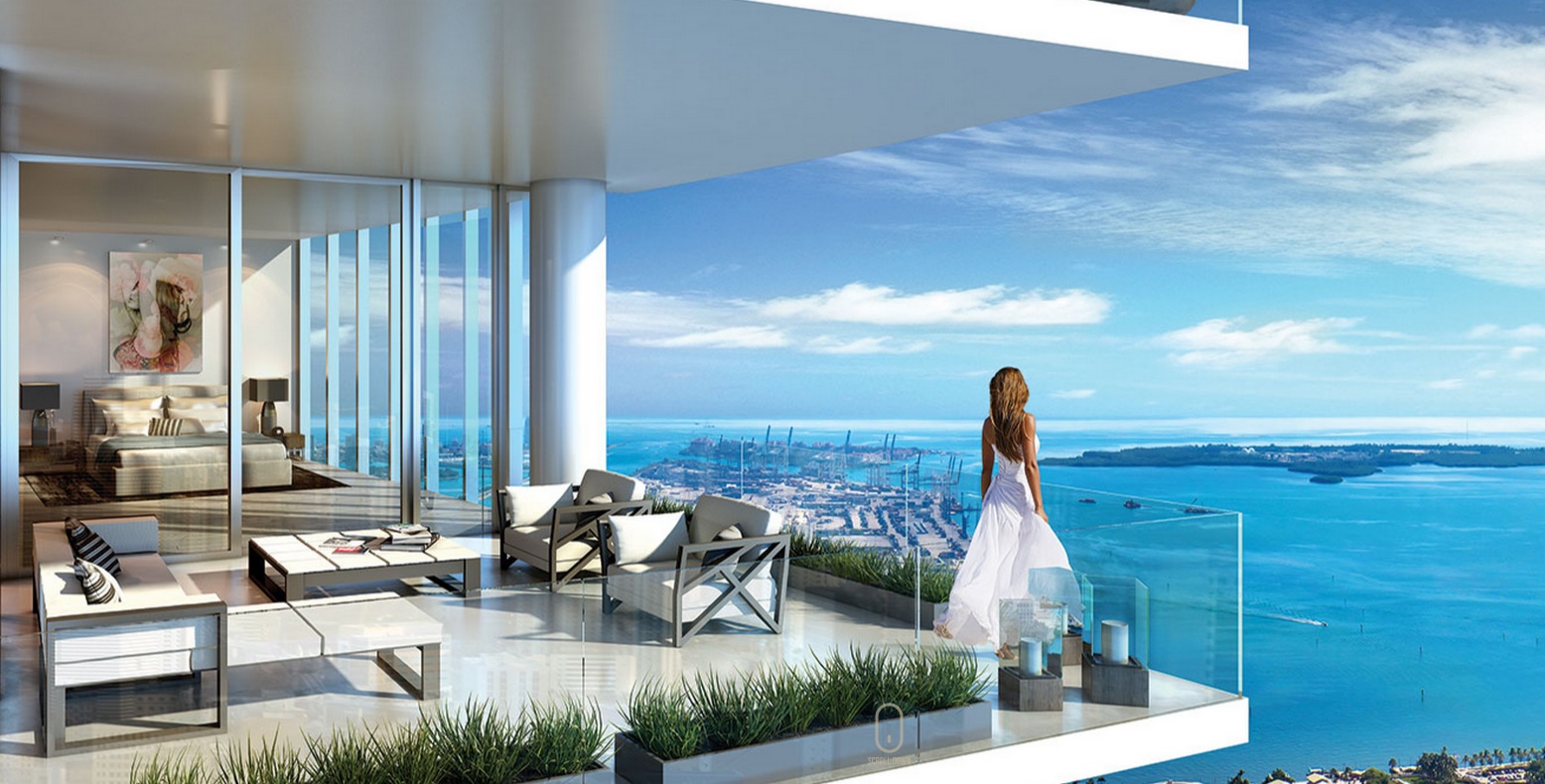Miami’s real estate market has long been a magnet for foreign investors. But developers now report that out-of-town buyers, both foreign and domestic, are seeking homes they can live it, rather than just park money into. The influx of these buyers is having a noticeable impact on how apartments, condos, and townhouses are designed, especially at the luxury end of the market.
The Miami Herald reports on several new multifamily projects whose homes include maid’s rooms, larger terraces, boutique-size closets, and guest suites.
The article points specifically to Paramount Miami Worldcenter, a $1.7 billion mixed-use complex that will blanket 27 acres of Overtown and downtown Miami, as an example of this trend. About 80 of its 513 apartments will include 250- to 280-sf studios with their own bathrooms and bedrooms, which could house a maid, a nanny, or a guest.
Another such project is the 12-apartment Louver House in South Beach, whose 2,400-sf units will include 700-sf terraces that allow residents to enjoy the outdoors more.
In an interview with The Real Deal, Camilo Miguel, CEO of Mast Capital, Louver House’s developer, says that five of the 12 apartments have been sold, at prices averaging about $1,300 per square foot. “We have a mixed group of buyers including a couple of New Yorkers looking to make it a permanent residence. There’s an owner from South America who bought here, an individual from the Apogee. They’re not investors, really. They’re end-users.”
The number of luxury homebuyers in Miami-Dade with New York addresses was up 20% in the first six months of 2015, according to the Herald. Developers are appealing to those buyers and renters who want that semi-urban experience by emphasizing their buildings’ proximity to mass transit. At least one developer, Property Market Groups, is also building smaller, more urban-like units: its 464-unit luxury rental at 300 Biscayne Blvd. called Vice will include studios at 530 sf for about $1,650 per month and one-bedrooms at 600 sf for about $1,800 per month, as well as larger units.
Miami’s attractiveness to out-of-towners continues to be the relative inexpensiveness of its housing, compared to other global cities. Quoting statistics from EWM Realty International, the Herald reports that prices in Miami Beach average $760 per sf, versus $2,204 in New York, $2,948 in London, and $2,331 in Hong Kong. (While Chinese investors account for a minuscule number of residential real estate buyers in Miami, they are seen as a growth market for whom housing units need to be tailored.)
Latin Americans accounted for 68% of all foreign buyers in Miami and Broward counties last year, according to the Miami Association of Realtors. However, number of foreign buyers has been slowing as currency crises rattle economies in Latin America and Europe. Cash sales, which often indicate international buyers, were down 12% in Miami-Dade in June 2015 compared with June 2014.
Related Stories
| Aug 9, 2022
5 Lean principles of design-build
Simply put, lean is the practice of creating more value with fewer resources.
| Aug 9, 2022
Designing healthy learning environments
Studies confirm healthy environments can improve learning outcomes and student success.
Legislation | Aug 8, 2022
Inflation Reduction Act includes over $5 billion for low carbon procurement
The Inflation Reduction Act of 2022, recently passed by the U.S. Senate, sets aside over $5 billion for low carbon procurement in the built environment.
| Aug 8, 2022
Mass timber and net zero design for higher education and lab buildings
When sourced from sustainably managed forests, the use of wood as a replacement for concrete and steel on larger scale construction projects has myriad economic and environmental benefits that have been thoroughly outlined in everything from academic journals to the pages of Newsweek.
AEC Tech | Aug 8, 2022
The technology balancing act
As our world reopens from COVID isolation, we are entering back into undefined territory – a form of hybrid existence.
Legislation | Aug 5, 2022
D.C. City Council moves to require net-zero construction by 2026
The Washington, D.C. City Council unanimously passed legislation that would require all new buildings and substantial renovations in D.C. to be net-zero construction by 2026.
Cultural Facilities | Aug 5, 2022
A time and a place: Telling American stories through architecture
As the United States enters the year 2026, it will commence celebrating a cycle of Sestercentennials, or 250th anniversaries, of historic and cultural events across the land.
Sponsored | | Aug 4, 2022
Brighter vistas: Next-gen tools drive sustainability toward net zero line
New technologies, innovations, and tools are opening doors for building teams interested in better and more socially responsible design.
| Aug 4, 2022
Newer materials for green, resilient building complicate insurance underwriting
Insurers can’t look to years of testing on emerging technology to assess risk.
Sustainability | Aug 4, 2022
To reduce disease and fight climate change, design buildings that breathe
Healthy air quality in buildings improves cognitive function and combats the spread of disease, but its implications for carbon reduction are perhaps the most important benefit.

















